THE RIGHT DOORS TO KNOCK ON WHEN PETITIONING FOR LOT SIZE RESTRICTIONS 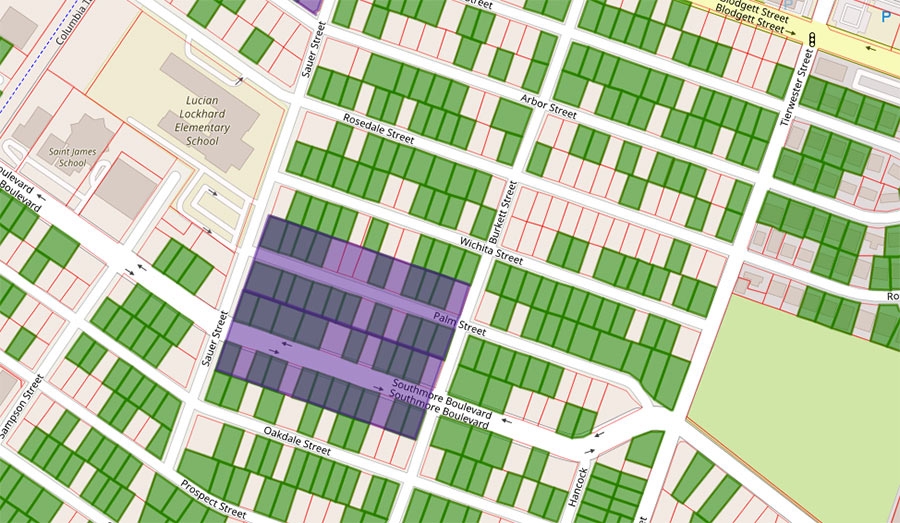 This new map put out by civic-minded data miner Jeff Reichman shows only one thing: which Houston properties are owner-occupied according to HCAD data — they’re indicated in green. But Reichman is pitching it as a tool residents can use to figure out something more: how likely their neighborhoods would be to qualify for a minimum lot size restriction. Minimum lot size refers to the smallest square footage developers can chop lots into in order to cram more structures onto them — like, say, townhomes — than they could have previously. The Planning Commission requires neighborhood consensus in order to consider applications for size restrictions — in the form of a vote, but first in signatures from the owners of the lots in question. And to gather that ink, it’s helpful to know who’s home. The map at top (taken from a set of bigger ones showing entire neighborhoods) takes a look at several Third Ward blocks south of Blodgett St. that appear well-suited to the Planning Commission’s requirements because they have high rates of home ownership, and because their lots are already of similar size (70 percent of lots in a given area must be the same size for the Planning Commission to consider restrictions, which wouldn’t do much good if the properties’ dimensions were already inconsistent.) And look — the purple rectangle shows 2 block faces where restrictions are already in place, on Southmore Blvd. and on Palm between Sauer and Burkett. [January Advisors; more info] Map: January Advisors
This new map put out by civic-minded data miner Jeff Reichman shows only one thing: which Houston properties are owner-occupied according to HCAD data — they’re indicated in green. But Reichman is pitching it as a tool residents can use to figure out something more: how likely their neighborhoods would be to qualify for a minimum lot size restriction. Minimum lot size refers to the smallest square footage developers can chop lots into in order to cram more structures onto them — like, say, townhomes — than they could have previously. The Planning Commission requires neighborhood consensus in order to consider applications for size restrictions — in the form of a vote, but first in signatures from the owners of the lots in question. And to gather that ink, it’s helpful to know who’s home. The map at top (taken from a set of bigger ones showing entire neighborhoods) takes a look at several Third Ward blocks south of Blodgett St. that appear well-suited to the Planning Commission’s requirements because they have high rates of home ownership, and because their lots are already of similar size (70 percent of lots in a given area must be the same size for the Planning Commission to consider restrictions, which wouldn’t do much good if the properties’ dimensions were already inconsistent.) And look — the purple rectangle shows 2 block faces where restrictions are already in place, on Southmore Blvd. and on Palm between Sauer and Burkett. [January Advisors; more info] Map: January Advisors
Development Restrictions
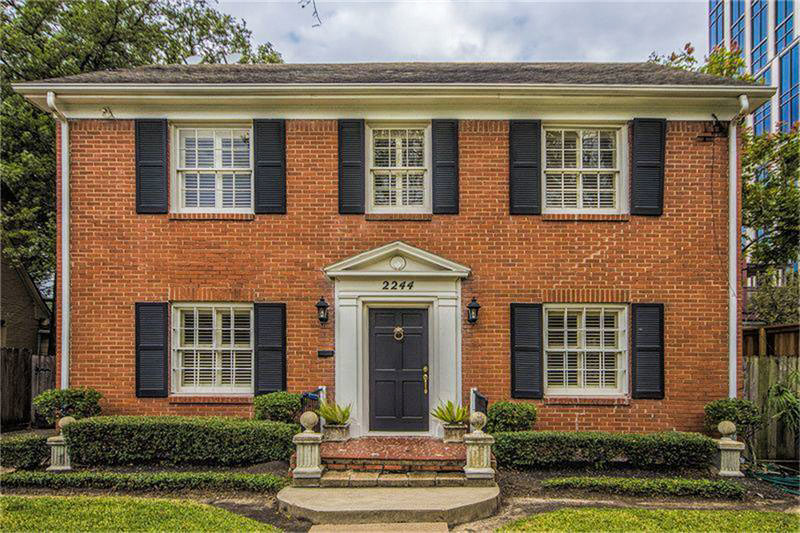
A reader notes that the 1938 house at 2244 Welch St. — just 60 ft. east of the new 17-story office tower neighbor at 2229 San Felipe (peeking in from the right in the frame above) — is up for sale. Renting residents of the house made the news during early construction of the “boutique” San Felipe Place highrise in 2014; the occupants complained of diesel fumes, noise, and structural damage to the property from equipment operating feet from the fenceline (including the giant crane planted in the lot next door). Hines’s efforts to patch up the neighborly dispute escalated from the hasty installation of “hobo-penthouse” plastic sheeting to an eventual payoff arrangement that helped the renting family move to Pearland around April of 2014.
The house went on the market for $789,000 last November, not long after the 2-time lawsuit-defying completion of the tower in September and the pickup of a handful of tenants. The Kinder Foundation announced in October that it would be leasing the top floor of the highrise, which can be seen peering in through the shutters in a few of the house’s listing shots:Â
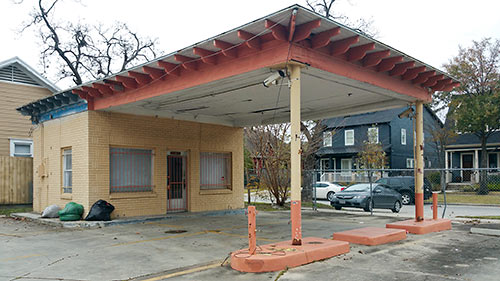
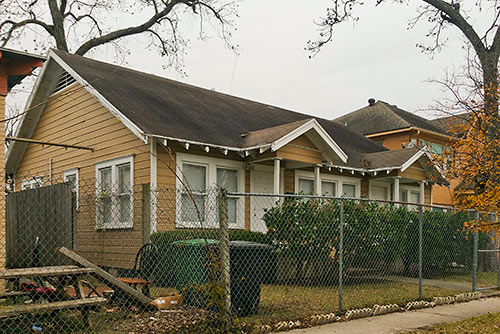
The owner of this 1930-ish former gas station and duplex bungalow at 3500 White Oak Dr. in the Houston Heights Historic District South plans to tear down the 2 structures and build a single-family home on the 8,800-sq.-ft. site — likely facing the side street, Cortlandt. Last week by a vote of 12 to 6 Houston’s planning commission reversed the decision of the archaeological and historic commission, allowing the demo to go through. The HAHC had denied the owner’s demolition request in November, insisting that the structures could be rehabbed. But experts hired by the owner indicated that the underground gas tank beneath the station couldn’t be removed without demolishing that structure, and that redevelopment of the duplex would be “cost prohibitive.”
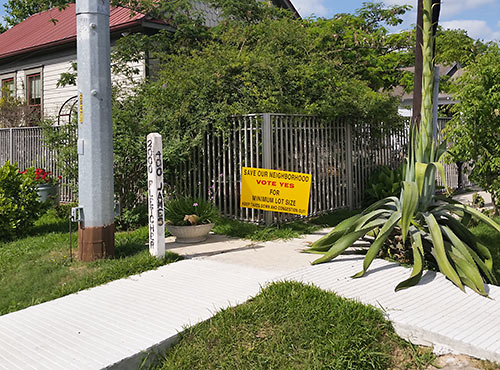
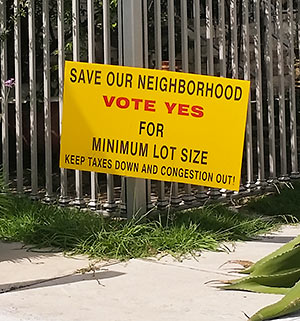 A couple of weeks after a flyer was distributed to residents near a lower section of the Near Northside north of Hogan St. and west of Main suggesting they oppose an application for minimum-lot-size restrictions in the area, a bunch of properties there have begun sporting signs that announce their residents’ support for the initiative, a reader who goes by the name Triton informs Swamplot.
A couple of weeks after a flyer was distributed to residents near a lower section of the Near Northside north of Hogan St. and west of Main suggesting they oppose an application for minimum-lot-size restrictions in the area, a bunch of properties there have begun sporting signs that announce their residents’ support for the initiative, a reader who goes by the name Triton informs Swamplot.
And Triton sends along this on-the-street report:
COMMENT OF THE DAY: GETTING THE MAXIMUM PRICE ON A MINIMUM LOT SIZE  “All things being equal, restricted property is worth less than un-restricted property. However, property for which NEIGHBORING properties are restricted can be MORE valuable. Property owners accept MLS [minimum lot size] restrictions on their own property in return for MLS restrictions on their neighbors’ property. If the value they give up by accepting the restriction on their own property is less than the value they gain by ensuring they won’t end up living next to a townhouse cluster, then it can be in their interest to accept the restriction.
If you own a tear-down, MLS restrictions will (probably) reduce the value of your home. If you own a valuable structure on a block with one or more tear-downs, MLS restrictions will probably INCREASE the value of your home.” [Angostura, commenting on Flyer Sent to Very Near Northside Warns of Dangers of Minimum Lot Size Designation] Illustration: Lulu
“All things being equal, restricted property is worth less than un-restricted property. However, property for which NEIGHBORING properties are restricted can be MORE valuable. Property owners accept MLS [minimum lot size] restrictions on their own property in return for MLS restrictions on their neighbors’ property. If the value they give up by accepting the restriction on their own property is less than the value they gain by ensuring they won’t end up living next to a townhouse cluster, then it can be in their interest to accept the restriction.
If you own a tear-down, MLS restrictions will (probably) reduce the value of your home. If you own a valuable structure on a block with one or more tear-downs, MLS restrictions will probably INCREASE the value of your home.” [Angostura, commenting on Flyer Sent to Very Near Northside Warns of Dangers of Minimum Lot Size Designation] Illustration: Lulu
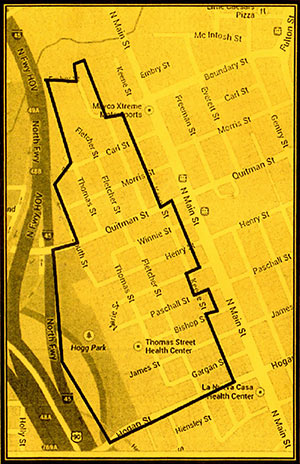 Swamplot reader Triton reports receiving a flyer urging people to oppose a minimum lot size designation for the area just north of Downtown shown in the map at right. The authors of the bright yellow flyer, written in English on one side and Spanish on the other, identify themselves only as “a group of very concerned property owners in this neighborhood,” but the text doesn’t include the names of any organization or individuals — only a Quitman St. return address and a phone number. “If you are within the marked boundary of the map below we want to inform you that there is a minimum lot size application currently being processed by the city of Houston,” the flyer reads. It encourages readers to oppose the application, because (it claims) “your land will potentially decrease in value,” and “it scares investors away.”
Swamplot reader Triton reports receiving a flyer urging people to oppose a minimum lot size designation for the area just north of Downtown shown in the map at right. The authors of the bright yellow flyer, written in English on one side and Spanish on the other, identify themselves only as “a group of very concerned property owners in this neighborhood,” but the text doesn’t include the names of any organization or individuals — only a Quitman St. return address and a phone number. “If you are within the marked boundary of the map below we want to inform you that there is a minimum lot size application currently being processed by the city of Houston,” the flyer reads. It encourages readers to oppose the application, because (it claims) “your land will potentially decrease in value,” and “it scares investors away.”
Here’s the text portion of the flyer:
COMMENT OF THE DAY: HOW TO BUILD A NEIGHBORHOOD MOAT WITH DEED RESTRICTIONS  “Instead of throwing lawsuits around, the people in River Oaks should start a Buy Protect Sell program. Buy pieces of land around their subdivision as they come up for sale. Protect those pieces of land by putting restrictive covenants on them (height regulations in particular, since their concern has been the proliferation of high rises in their area). Then sell the properties with the restrictions in place.
B/P/S has been used for about a decade by environmentalists elsewhere in the country. It could be used to preserve the low-rise character around a neighborhood. The drawback is that it can be costly for poorer neighborhoods, but River Oaks could well afford it.” [ZAW, commenting on Neighbors File Suit To Stop Hines San Felipe Tower; Silo Sightseeing] Illustration: Lulu
“Instead of throwing lawsuits around, the people in River Oaks should start a Buy Protect Sell program. Buy pieces of land around their subdivision as they come up for sale. Protect those pieces of land by putting restrictive covenants on them (height regulations in particular, since their concern has been the proliferation of high rises in their area). Then sell the properties with the restrictions in place.
B/P/S has been used for about a decade by environmentalists elsewhere in the country. It could be used to preserve the low-rise character around a neighborhood. The drawback is that it can be costly for poorer neighborhoods, but River Oaks could well afford it.” [ZAW, commenting on Neighbors File Suit To Stop Hines San Felipe Tower; Silo Sightseeing] Illustration: Lulu
HARRIS COUNTY’S NEW GAME ROOM GAME 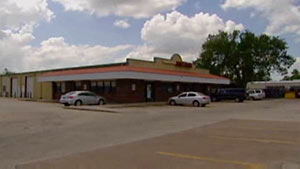 Among the new requirements for game rooms in Harris County just approved by commissioners this afternoon: A big sign outside that says “GAME ROOM.” And you’ll know there’ll be at least half a dozen “eight-liner” video poker machines inside, because they won’t be able to tint the windows anymore. New establishments will need to be at least 1,500 ft. away from schools, churches, or residential neighborhoods. “Charitable” bingo halls that fall under the ordinance won’t need to follow these new rules, but they will need to get a permit like other game rooms, pay a $1000 annual fee to the county, and shut down at 10 p.m. [Houston Chronicle ($); previously on Swamplot] Photo of recently shuttered game room on Monroe Rd. at Almeda Genoa: abc13
Among the new requirements for game rooms in Harris County just approved by commissioners this afternoon: A big sign outside that says “GAME ROOM.” And you’ll know there’ll be at least half a dozen “eight-liner” video poker machines inside, because they won’t be able to tint the windows anymore. New establishments will need to be at least 1,500 ft. away from schools, churches, or residential neighborhoods. “Charitable” bingo halls that fall under the ordinance won’t need to follow these new rules, but they will need to get a permit like other game rooms, pay a $1000 annual fee to the county, and shut down at 10 p.m. [Houston Chronicle ($); previously on Swamplot] Photo of recently shuttered game room on Monroe Rd. at Almeda Genoa: abc13
HOW EASY IS IT TO GET OUT OF IDYLWOOD? 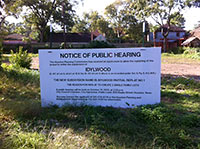 A reader wonders if subdividing lots might get you new subdivision rules: “There is a great big ole sign [pictured at right] in the vacant lot at 6636 Meadowlawn in Idylwood. It is a notice of a request to replat the lot into two single family lots. It is plenty large enough, being one full lot and parts of the two lots on either side. As it stands, I can understand why they’d want to replat. The company that bought the property is Nadco LLC.
That in itself is not so strange but what is strange is that the sign also says that the two new lots will create a new subdivision known as Idylwood Partial Replat #1.
. . . I’m wondering if the ‘new subdivision’ would be subject to Idylwood deed restrictions or if they could totally disregard setbacks and lot lines among other things.” [Swamplot inbox; previously on Swamplot] Photo: Swamplot inbox
A reader wonders if subdividing lots might get you new subdivision rules: “There is a great big ole sign [pictured at right] in the vacant lot at 6636 Meadowlawn in Idylwood. It is a notice of a request to replat the lot into two single family lots. It is plenty large enough, being one full lot and parts of the two lots on either side. As it stands, I can understand why they’d want to replat. The company that bought the property is Nadco LLC.
That in itself is not so strange but what is strange is that the sign also says that the two new lots will create a new subdivision known as Idylwood Partial Replat #1.
. . . I’m wondering if the ‘new subdivision’ would be subject to Idylwood deed restrictions or if they could totally disregard setbacks and lot lines among other things.” [Swamplot inbox; previously on Swamplot] Photo: Swamplot inbox
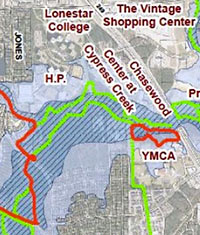 The director of the Bayou Land Conservancy announced yesterday that a 100-acre tract of flood-prone land surrounding Cypress Creek just south of the Hewlett-Packard campus between Hwy. 249 and Jones Rd. will now become a permanent conservation easement. (Segments of the waterway marked in dark and light blue in the map at right indicate the 100-year floodway and 100-year floodplain, respectively.) The land trust purchased the property with help from a $500,000 Houston Endowment grant; plans are to incorporate the tract into the planned Cypress Creek Greenway, extending the full length of the bayou from Spring Creek to the Katy Prairie:
The director of the Bayou Land Conservancy announced yesterday that a 100-acre tract of flood-prone land surrounding Cypress Creek just south of the Hewlett-Packard campus between Hwy. 249 and Jones Rd. will now become a permanent conservation easement. (Segments of the waterway marked in dark and light blue in the map at right indicate the 100-year floodway and 100-year floodplain, respectively.) The land trust purchased the property with help from a $500,000 Houston Endowment grant; plans are to incorporate the tract into the planned Cypress Creek Greenway, extending the full length of the bayou from Spring Creek to the Katy Prairie:
A NEW TEETOTALING CIRCLE LANDS ON LANCASTER PLACE 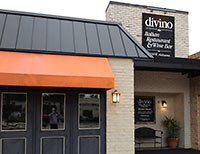 By a vote of city council, St. Stephen’s Episcopal School today became the seventh private school in the city to be granted a 1,000-ft. alcohol-free zone around its campus. Included within that circumference around 1800 Sul Ross St.: the H-E-B Montrose Market that opened last November on the former site of the Wilshire Village Apartments. Last year St. Stephen’s lost a court battle over restricting alcohol sales at the grocery store, though the battle did end up delaying the start of H-E-B beer and wine sales until shortly before New Year’s. The new restrictions will not apply to businesses that already hold alcohol licenses, but they could make a difference to other developments planned near the corner of Dunlavy and West Alabama. [St. Stephen’s; previously on Swamplot] Photo of Divino restaurant, 1830 West Alabama: Gabe C.
By a vote of city council, St. Stephen’s Episcopal School today became the seventh private school in the city to be granted a 1,000-ft. alcohol-free zone around its campus. Included within that circumference around 1800 Sul Ross St.: the H-E-B Montrose Market that opened last November on the former site of the Wilshire Village Apartments. Last year St. Stephen’s lost a court battle over restricting alcohol sales at the grocery store, though the battle did end up delaying the start of H-E-B beer and wine sales until shortly before New Year’s. The new restrictions will not apply to businesses that already hold alcohol licenses, but they could make a difference to other developments planned near the corner of Dunlavy and West Alabama. [St. Stephen’s; previously on Swamplot] Photo of Divino restaurant, 1830 West Alabama: Gabe C.
 Why is Houston the only major city in the country that bans propane-equipped food trucks from operating Downtown — and one of the few that prohibits all food trucks from serving near seating areas or even setting up their own chairs for customers? A few clues appear in Katherine Shilcutt’s fascinating account of Tuesday’s city hearing, during which council members expressed a few concerns: that food-truck purveyors might be selling “other items” on the sly, or that there might not be a sufficient number of city inspectors to police the existing fleet. But, Shilcutt reports, “The questions got even stranger when Council Member Andrew Burks began hinting at the possibility of terrorists using food trucks’ propane tanks as weapons, a comment that prompted laughter from the audience.”
Why is Houston the only major city in the country that bans propane-equipped food trucks from operating Downtown — and one of the few that prohibits all food trucks from serving near seating areas or even setting up their own chairs for customers? A few clues appear in Katherine Shilcutt’s fascinating account of Tuesday’s city hearing, during which council members expressed a few concerns: that food-truck purveyors might be selling “other items” on the sly, or that there might not be a sufficient number of city inspectors to police the existing fleet. But, Shilcutt reports, “The questions got even stranger when Council Member Andrew Burks began hinting at the possibility of terrorists using food trucks’ propane tanks as weapons, a comment that prompted laughter from the audience.”
The possibility of overfueled taco trucks blowing up Downtown Houston, however, wasn’t the only frightening specter Burks conjured up before the mostly mobile-food-friendly crowd:
COMMENT OF THE DAY: HOW THE GAME IS PLAYED “This is awesome! This is what makes Houston entertaining. With no zoning rules in place, our residential landscape is essentially open to a free for all when it comes to building. Residents have little or no protection against what can go up right next to them. SO what do you do to protect your current neighborhood, you get creative and fight back. Just as the developer has as much of a right to build there, the community also has the right to reject or stop it any legal way they can.” [MericaRulz, commenting on A List of Gentle Ashby Highrise Protest Methods]

Neighborhood residents hoping to weigh in on the details of the proposed settlement announced 2 weeks ago in the lawsuit filed against the city of Houston by the developers of the proposed Ashby Highrise were greeted at last night’s meeting with Mayor Parker with news that the agreement had already been finalized. The settlement requires the city to approve and permit a 21-story mixed-use tower at 1717 Bissonnet St., as long as the predicted traffic it generates meets a few prescribed limits. The agreement also puts a few restrictions on traffic flows in and out of the building on separate driveways facing Bissonnet and Ashby St., and requires developers to build an 8-ft. fence and camouflage the 5-story parking garage behind it with greenery where the building backs up against homes on its south and east sides. Also included: some lighting and noise-mitigation requirements, and a free morning and afternoon weekday shuttle service for the project’s future residents to and from the Med Center.
COMMENT OF THE DAY: COMES WITH THE LAND “If you take the Houston blinders off for a minute, you’ll realize that ‘deed restrictions protect property values’ and ‘zoning distorts property values’ are the same statement. Other things that ‘distort’ property values are: having a functioning police force so you have a reasonable certainty that a band of pirates won’t come steal everything you own; having roads to connect your property to other things; being located in a country with a functioning economy; public support of decent schools; a public health system that prevents outbreaks of Ebola; lack of a brutal murderous dictatorial regime; and not living downwind of a sewage treatment plant. Which of these are ‘evil planning’ vs ‘sensible government’ is, of course, determined by the political views of the speaker.” [John (another one), commenting on Comment of the Day: Keep Houston Cheap]

